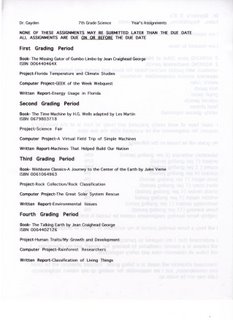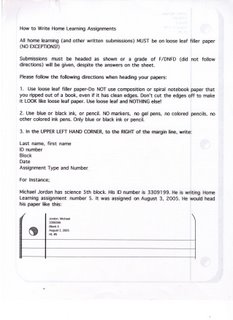Monday, 28 August and Thursday, 31 August, 2006




Using information from classroom activities, the Missing 'Gator of Gumbo Limbo, and classroom information:
Students should be able to:
1. read a work of fiction to discover how the scientific process can be used to solve a problem.
2. learn requirements for major assignments for the grading period.
3. use technology to research a topic.
Our do-now, which is a lead-in to our technology project, is to do a quick write on what is a scientist. Students are to write 3 to 4 sentences about whay they think a scientist is and what they do.
Students reviewed HL # 6 on graphing. We then reviewed the types of graphs used in science, which are circle/pie, line and bar. Remember, circle graphs are used to express percentages, line graphs are used to compare two sets of numbers, and bar graphs are used to compare sets of objects.
We then passed out and explained the project for the grading period, on Florida climate. Students also received the technology project requirements for GEEK of the week. This report is due next week, so students need to start research now.
We finished chapters 2 and 3 of The Missing 'Gator of Gumbo Limbo. The home learning assignment is to choose a characatger from the book and describe that character in terms of race, sex, physical description, personality. Also, would you choose this character to be a friend? Why or why not?
























